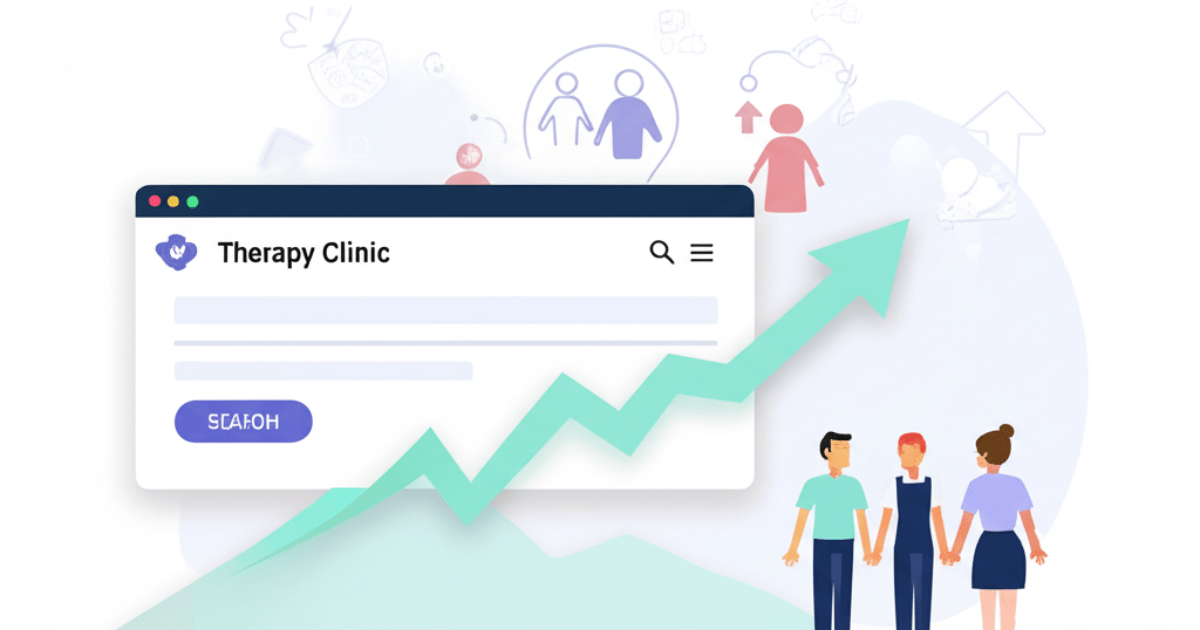
Introduction
Blogging is an essential tool for physical, occupational, and speech therapy practices looking to build trust, educate patients, and establish themselves as industry leaders. Effective blogging for therapy clinics goes beyond promoting services; a well-maintained blog provides meaningful insights into therapy techniques, injury prevention, and rehabilitation strategies, helping patients make informed decisions about their care.
By offering clear, research-based information, therapy professionals can dispel myths, answer common patient concerns, and create a deeper connection with their audience. Blogging also plays a key role in search engine optimization (SEO), ensuring that therapy clinics remain visible to those searching for care.
This article explores how blogging benefits therapy clinics, improves patient engagement, and drives business growth while positioning therapists as trusted experts in their field.
Educating Patients and the Community
Providing Reliable Information
Many individuals seeking therapy are unfamiliar with the rehabilitation process or the benefits of physical, occupational, or speech therapy. With a patient education blog, therapists can explain therapy methods in simple, accessible language, helping patients feel more comfortable before starting treatment.
Common blog topics that educate patients include:
The differences between physical therapy, occupational therapy, and speech therapy.
Step-by-step guides on at-home exercises to support therapy sessions.
Myths about therapy and what patients should actually expect.
How therapy can help specific conditions like arthritis, post-stroke recovery, or speech delays.
Tips for caregivers supporting loved ones in therapy.
Educating the community through blogging also fosters a proactive approach to health, encouraging people to seek therapy earlier instead of waiting until their condition worsens.
Empowering Patients with Self-Management Strategies
Many patients want to be active participants in their recovery. Blogs that offer simple yet effective techniques, such as posture corrections, voice exercises, or balance drills, can make therapy feel more accessible.
For instance, a blog post titled “Five Simple Exercises to Reduce Shoulder Pain at Home” provides immediate value to a reader while also showcasing the therapist’s expertise. Patients who see results from these tips are more likely to trust the clinic’s services and schedule an appointment.
Building Trust and Strengthening Patient Relationships
Enhancing Patient-Therapist Communication
A blog allows therapists to address common questions patients may have about their treatment journey. By writing about frequently asked questions such as “How long does therapy take?” or “What should I expect in my first session?”, therapists can help ease anxieties before a patient even steps into the clinic.
Patients who feel informed and heard are more likely to be engaged in their recovery, leading to better treatment adherence and long-term success.
Establishing Credibility and Authority
Patients are more likely to trust a therapist who demonstrates deep knowledge of their specialty. By sharing well-researched articles, therapists showcase their expertise and commitment to providing evidence-based care.
Professional credibility can also extend beyond patients to other healthcare providers. Physicians and specialists looking for reliable therapy partners may refer patients to clinics that provide high-quality educational content, leading to increased professional collaboration.
How Blogging Helps Therapy Clinics Grow

Improving Online Visibility Through SEO
Blogging is one of the most effective ways to improve a clinic’s search engine ranking for therapy clinic SEO. When someone searches for terms like “best physical therapy for knee pain” or “speech therapy techniques for toddlers,” well-optimized therapy blog content increases the likelihood that the clinic’s website will appear at the top of search results.
Key SEO strategies that boost visibility include:
Using relevant keywords such as “occupational therapy for stroke recovery” or “speech therapy for autism.”
Writing long-form content that thoroughly answers patient questions.
Including internal links to direct readers to service pages, appointment booking forms, or related articles.
Optimizing meta descriptions and headers to improve search rankings.
With consistent blogging, therapy clinics can increase website traffic and attract new patients searching for trusted healthcare providers.
Increasing Social Media Engagement
Blog content can be repurposed into social media posts, infographics, and short videos, making it easier to engage with followers across platforms like Facebook, Instagram, and LinkedIn.
For example, a blog titled “How to Improve Posture at Your Desk” could be broken into smaller content pieces:
A carousel post on Instagram demonstrating stretches.
A short TikTok video explaining the importance of posture.
A Facebook Q&A session discussing common workplace injuries.
This multiplies the reach of one blog post, ensuring that content is seen and shared across multiple platforms, ultimately directing more traffic back to the clinic’s website.
Encouraging Word-of-Mouth Referrals
When patients find a clinic’s blog helpful, they are more likely to share it with family and friends. A parent who reads a helpful guide on speech therapy exercises for toddlers may send it to other parents in a support group. Similarly, an athlete recovering from an injury may forward a rehabilitation-focused article to a teammate experiencing similar pain.
Consistently providing value through blogging strengthens the clinic’s reputation and fosters organic word-of-mouth referrals.
Creating a Sustainable Blogging Strategy for Therapists
Setting a Realistic Content Schedule
Therapists do not need to post daily to maintain a successful blog. However, consistency is key. The recommended posting frequency is:
Blog Posts: 2-4 per month for SEO and engagement
Social Media Posts: 3-5 per week (varies by platform)
Email Newsletters: 1-2 per month
YouTube Videos: 1-2 per week for Shorts, 2-4 per month for long-form videos
This ensures steady visibility while preventing burnout.
Choosing Blog Topics That Resonate with Patients
Writing about real-life patient concerns ensures blog posts remain relevant. Some topic ideas include:
How physical therapy helps prevent surgery for joint pain.
The benefits of occupational therapy for stroke survivors.
Speech therapy exercises parents can do with their child.
How to manage chronic pain through therapy techniques.
The role of therapy in mental health and well-being.
Repurposing Blog Content to Save Time
To maximize efficiency, therapists can repurpose blog posts into multiple forms of content. A single blog post can be transformed into:
An email newsletter for existing patients.
A YouTube video demonstrating therapy techniques.
A downloadable patient resource guide for clinic visitors.
Using a content calendar for therapists helps therapists plan and organize blog posts in advance, ensuring consistency without adding stress.
Conclusion
Blogging is a valuable tool for therapy clinics to educate patients, build trust, and grow their practice. Well-researched and engaging content helps answer common patient concerns, showcases expertise, and improves online visibility, central to rehabilitation content marketing.
By consistently sharing insights on rehabilitation, therapy techniques, and patient success stories, therapists position themselves as credible, approachable experts. Blogging strengthens connections with patients while attracting new ones, ensuring the continued success of therapy practices.
Managing a blog, however, requires time, effort, and consistency. This is where HelloNote EMR comes in. HelloNote EMR helps therapy clinics streamline content strategies, schedule patient education posts, and optimize digital engagement all within a single platform. With built-in tools to track performance, organize content, and maintain consistency, HelloNote ensures that your clinic maximizes the power of blogging for therapy clinics without added stress.
Ready to Transform Your Practice with Content Marketing?
Want to learn how HelloNote can enhance your clinic’s content marketing efforts? Schedule a demo today and discover how blogging can transform your practice.



















